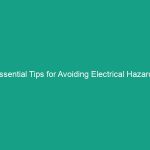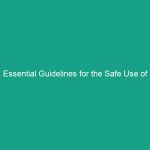Introduction
Good morning team,
Today, we’re diving into an essential topic that impacts our Safety and efficiency on the job: Electrical Panel Access Clearance Requirements & Safe Practices. Understanding these requirements is crucial for maintaining a safe working Environment, preventing accidents, and ensuring compliance with Safety Regulations.
Electrical panels are integral to our operations, but they can pose significant risks if not approached correctly. By the end of this Toolbox Talk, you’ll be equipped with the knowledge to maintain Safe Practices around electrical panels, ensuring not only your safety but also the safety of your coworkers.
Understanding Electrical Panel Access Clearance Requirements
Electrical panels, also known as breaker boxes or distribution boards, are critical components in our electrical systems. They distribute electricity throughout a building and house circuit breakers that protect our electrical circuits from overloads.
Access clearance requirements refer to the space that must be maintained around electrical panels to ensure safe Operation and Maintenance. This clearance is essential for emergency access, routine inspections, and repairs.
Common misconceptions include the belief that any available space can serve as clearance. In reality, there are specific regulations and guidelines that dictate the minimum required clearance around electrical panels, which are designed to protect workers from Electrical Hazards.
Key Hazards, Risks, and Safety Considerations
Working near electrical panels poses several Hazards, including:
- Electrical Shock: Contact with live parts can lead to severe injuries or fatalities.
- Arc Flash: Sudden release of energy due to a fault can result in explosive bursts of heat and pressure.
- Inadequate Access: Blocked access can delay emergency responses and maintenance work.
Ignoring these safety protocols can lead to real-world consequences, such as electrical Burns, equipment damage, and even loss of life. It’s vital to recognize that these risks are preventable through adherence to safety practices.
Best Practices, Procedures, & Actionable Advice
To ensure safety around electrical panels, follow these Best Practices:
1. Maintain Proper Clearance
Ensure that there is adequate space around electrical panels. The National Electrical Code (NEC) recommends a minimum clearance of 3 feet in front of panels and 30 inches in width. This space is crucial for safe operation and maintenance.
2. Label and Mark Panel Areas
Clearly label electrical panels and mark access areas to avoid obstructions. Use signage to indicate that access must remain clear at all times.
3. Regular Inspections
Conduct routine inspections to ensure that access areas remain clear and that the panels themselves are in good condition. Look for signs of wear, corrosion, or damage.
4. Use Personal Protective Equipment (PPE)
Always wear appropriate PPE when working near electrical panels. This includes insulated gloves, Safety Goggles, and flame-resistant clothing.
5. Training and Awareness
Participate in Training sessions on Electrical Safety and panel access requirements. Understanding the risks and Safety Measures is key to preventing accidents.
6. Emergency Procedures
Know the emergency procedures in case of an electrical incident. Ensure everyone on the team knows how to respond appropriately to minimize injuries and damage.
Regulations, Standards, and Compliance
Compliance with safety Standards is not just a legal obligation; it’s a moral one. The Occupational Safety and Health Administration (OSHA) and the National Fire Protection Association (NFPA) provide guidelines that must be followed to ensure safety around electrical panels.
Key regulations include:
- osha Standard 1910.303: General requirements for electrical installations.
- NFPA 70: National Electrical Code (NEC) regulations on electrical installations and safety.
Adhering to these standards protects not only you but also your coworkers and the company as a whole.
Employee Engagement & Discussion
Let’s open the floor for some discussion. Think about your experiences:
- What safety challenges have you encountered related to electrical panels?
- How can we improve our current practices to enhance safety?
- Have you ever witnessed or experienced an incident related to electrical safety? What happened?
Your insights are valuable and can help improve our safety practices.
Conclusion & Key Takeaways
In summary, maintaining proper electrical panel access clearance is vital for Workplace Safety. Remember:
- Ensure a minimum of 3 feet of clearance in front of electrical panels.
- Always wear appropriate PPE when near electrical panels.
- Participate in regular training and inspections.
- Know and follow OSHA and NFPA regulations.
By prioritizing safety and adhering to these practices, we can create a safer working environment for everyone. Thank you for your attention and commitment to safety. Let’s make sure we look out for each other!


